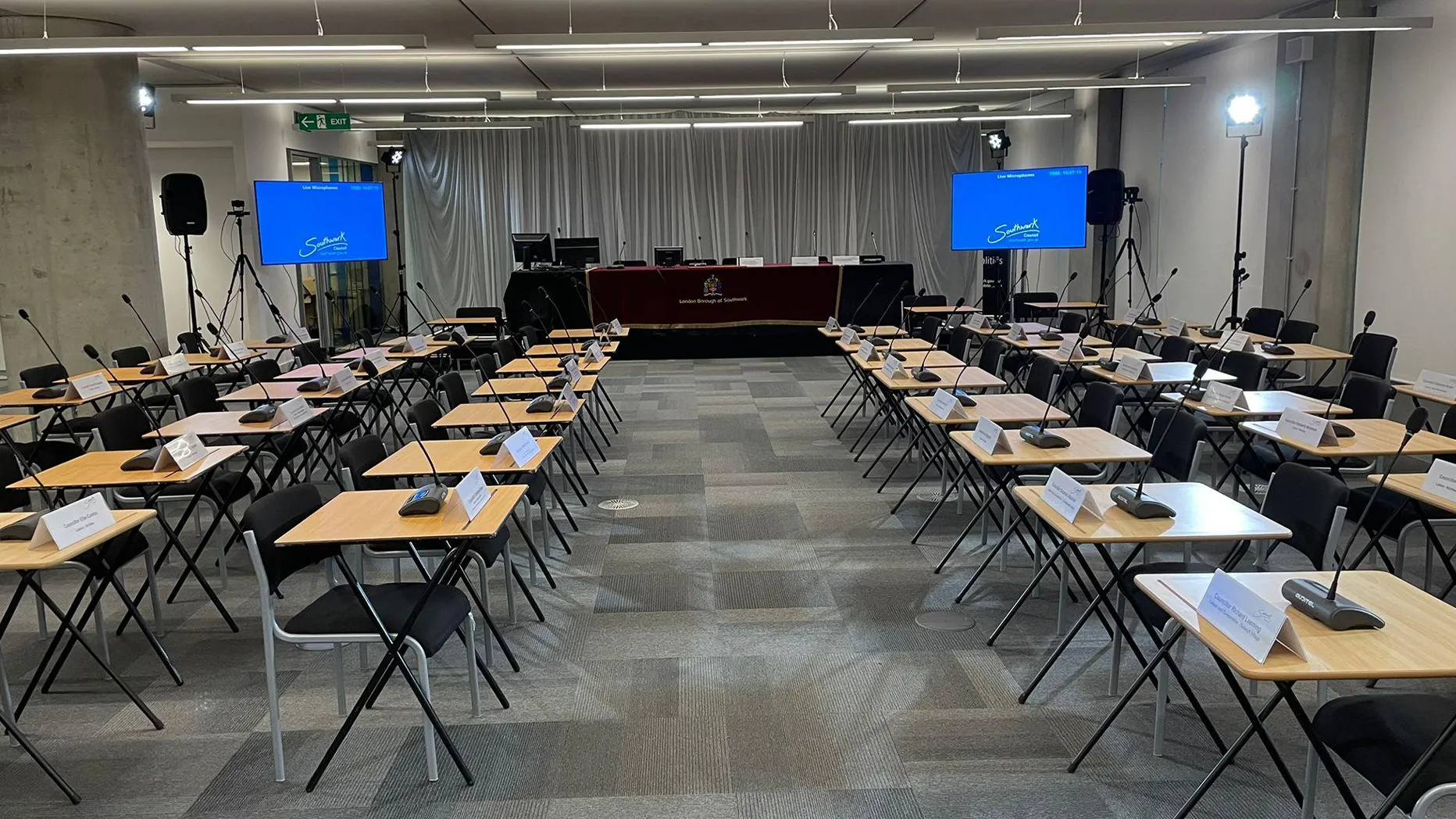Are you hosting an international conference and watching your attendees struggle to understand the keynote speaker? It is awkward, frustrating, and ultimately ineffective. That is exactly what can happen if you do not have a solid interpretation plan in place, especially for large conferences with multilingual attendees.
Whether you are planning a global business summit, an academic conference, or a government forum, interpretation services can make or break the experience.
6 Steps to Craft a Best Interpretation Plan
Let us walk you through every essential step to create a seamless interpretation plan that ensures everyone feels included, engaged, and informed. Let’s dive in.
Step 1: Understand the Language and Audience Needs
Before you start booking interpreters or renting equipment, you need to know your audience. You cannot plan an effective interpretation if you do not understand who you are interpreting for. Identifying language needs helps you choose the right interpretation method and prevents overspending or underpreparing.
What to do:
- Analyse attendee demographics
- Use registration forms to gather data on preferred languages
- Identify the language of speakers and panellists
Sometimes speakers may need interpretation, too. Also consider the cultural contexts. Some prefer formal speech, while others appreciate casual tones. Lastly, do not assume English is enough, even in an international conference. You may have attendees from a region where English proficiency varies widely.
Step 2: Choose the Right Type of Interpretation
Not all conferences require the same interpretation method. The choice between simultaneous, consecutive, or whispered interpretation depends on your event’s size, format, and budget.
Some of the most common types of interpretation are the following:
Simultaneous interpretation: Ideal for large conferences, interpreters translate in real time, and attendees listen via headsets.
Consecutive interpretation: Better for small sessions or Q&As. The speaker pauses so the interpreter can translate. It works for smaller sessions.
Relay interpretation: Useful when no single interpreter knows all language pairs (such as Spanish into English into Japanese). It works for very small groups, typically 1 to 2 people.
Step 3: Set Clear Interpretation Goals
Without clear goals, even the best interpretation teams may fall short. What goals should you set?
Accuracy over speed or vice versa, depending on your session type. Cultural sensitivity is required if your content is highly contextual. Real time delivery for plenary sessions or keynote speeches.
Goals set the standard for interpreter performance, guide your technology setup, and help you measure event success afterwards.
How to define goals: Collaborate with your content and communications teams. The list must have deliverables (such as real-time interpretation for keynotes). Set expectations for different session types (informal versus formal)
Step 4: Hire Professional Interpreters
Your interpreters are the bridge between your speakers and your international audience. Hiring the wrong team can cause miscommunications, embarrassment, or even offence. What to look for:
Certification and experience: Look for conference-level certification (such as AIIC or ATA).
Specialisation in your industry: Medical, legal, tech, every field has unique jargon.
Multilingual support is important: Consider hiring a vendor who can offer multiple language combinations.
Some interpreters work best in person. Others are skilled in virtual formats. When you are hiring quality interpreters, it is an investment. Do not go cheap. A bad interpretation can cost your reputation.
Step 5: Secure the Right Interpretation Equipment
Once you have got your interpreters, they will need the right tools. So will your attendees. Here is an interpretation equipment checklist:
- Soundproof interpreter booths.
- Microphones for interpreters and speakers.
- Transmitters and wireless receivers or headsets.
- Backup batteries and chargers.
- Monitors or screens for remote interpreters.
- On-site technician or support staff
Moreover, for virtual and hybrid events, check the following:
- High-speed internet.
- Platform integration (Zoom, Kudo, etc.).
- Audio redundancy setup.
Step 6: Plan Your Schedule With Interpretation in Mind
Interpreters, unlike regular staff, need breaks, rotation, and prep time to stay effective. While scheduling, do follow the following tips:
Assign two interpreters per language booth for rotation every 20 to 30 minutes. Give interpreters full agendas in advance so they can prepare terminology.
Plan interpreter briefings before the event begins. Stagger multilingual sessions to manage interpreter load. And even a well-paid interpreter will struggle without proper pacing.
Final Thoughts: Why a Strong Interpretation Plan Matters
When you invest in an interpretation plan, you are not just adding a feature; you are making your conference truly inclusive and global. Multilingual audiences deserve to feel heard, respected, and engaged just as everyone else does.
An interpretation plan bridges language gaps, enhances communication, and ultimately boosts your event’s credibility, reach, and impact. Take the time to plan it right, and your conference will be remembered for all the right reasons.
